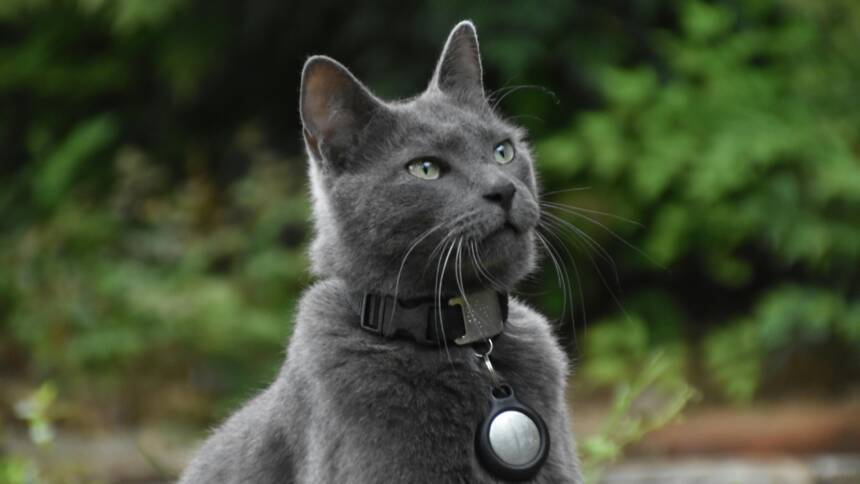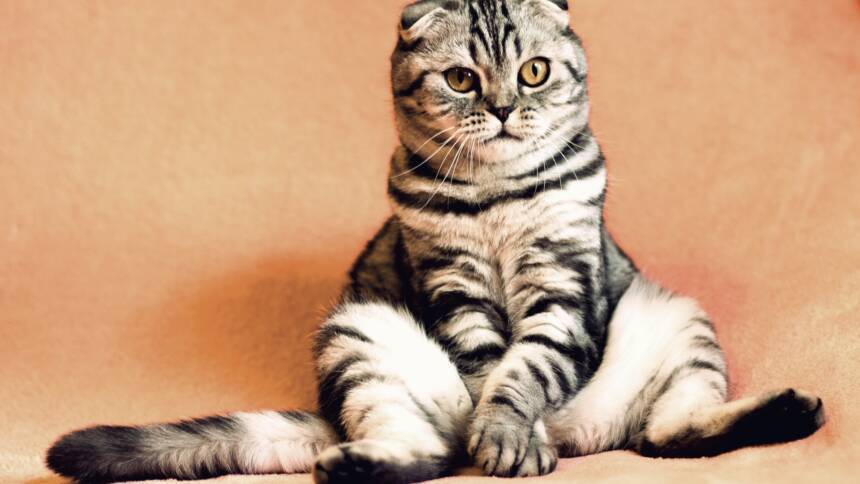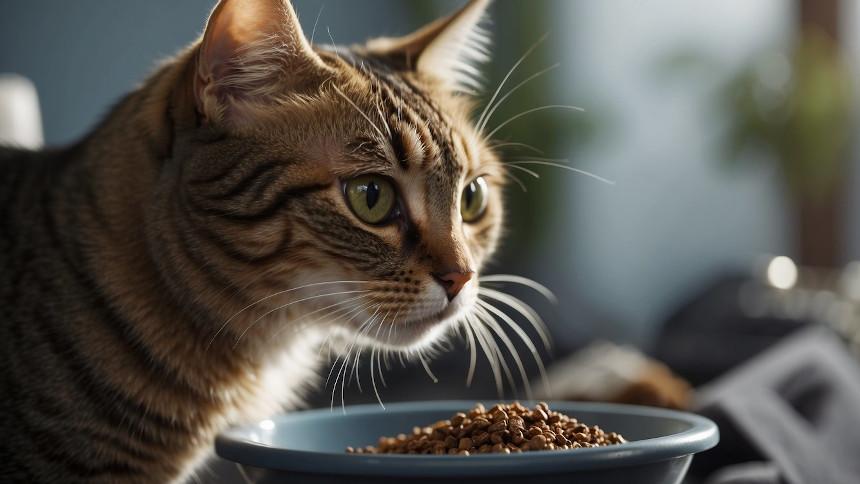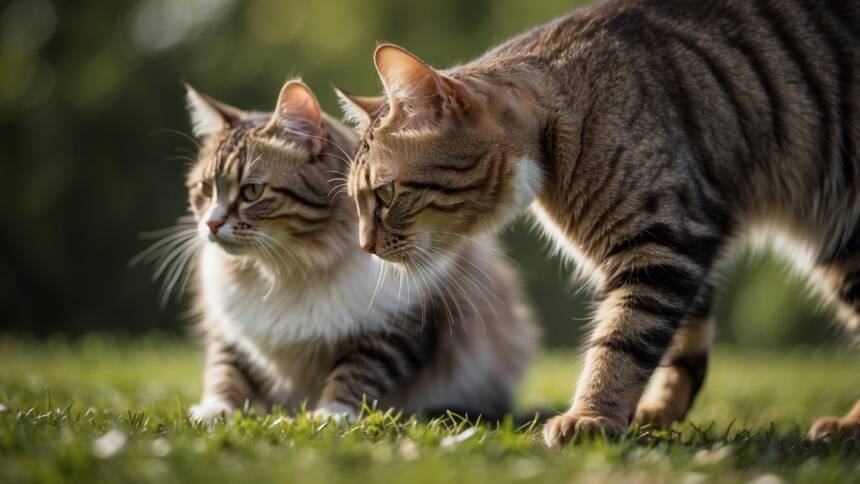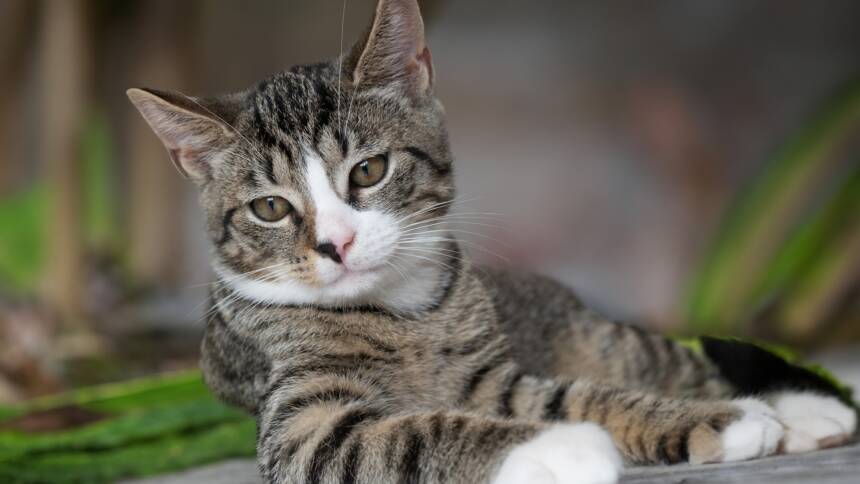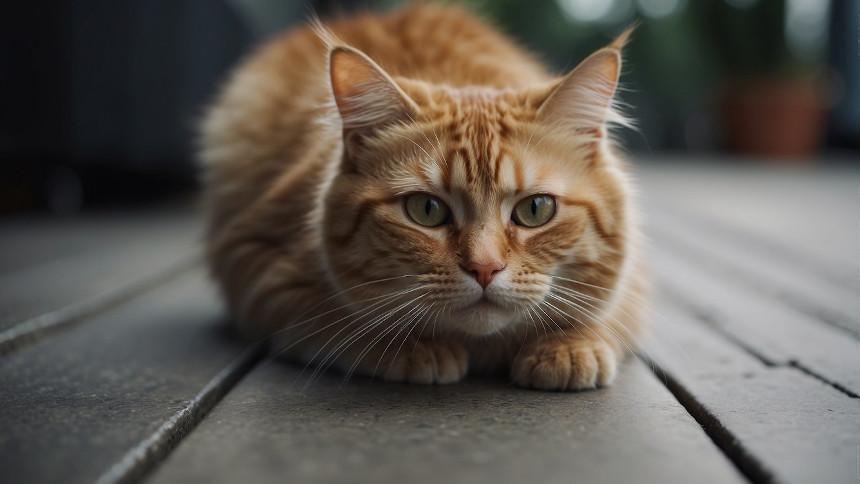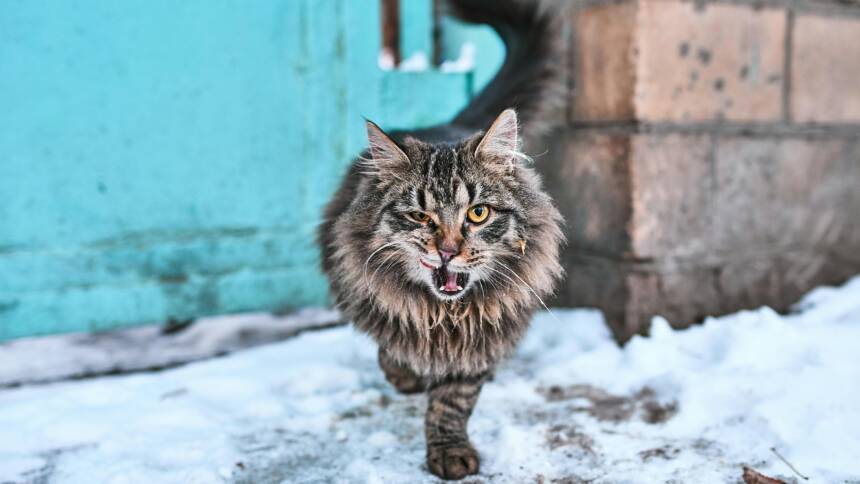Many cat owners face a common challenge when their feline friends resist wearing a collar. Although collars are essential for identification and safety, especially if a cat accidentally ventures outdoors, not all cats welcome this addition. Cats may dislike the feel of something around their necks, or they could be irritated by the jingle of a dangling ID tag or bell.
To encourage a cat to accept a collar, it is crucial to understand the roots of their discomfort. It might be the weight, the texture, or the sound of the collar. A lightweight, softly padded collar without extraneous tags may be more readily accepted. Breakaway collars, designed to open under pressure, add an element of safety by preventing a cat from getting trapped or injured if the collar snags on something.
Cats are creatures of habit, and introducing any new accessory requires patience and positive reinforcement. Letting a cat become accustomed to the feel of a collar by gradually increasing the length of time it is worn can make the transition smoother. Providing treats and affection can create a positive association with the collar over time. With a considerate and methodical approach, a cat can become comfortable with wearing a collar, ensuring both their safety and an owner’s peace of mind.
Understanding Cat Behavior and Collars
Cats often exhibit unique behavioral responses when introduced to new things, such as wearing a collar. It’s crucial to discern why some cats dislike collars and to recognize the signs of their discomfort.
Why Some Cats Dislike Collars
Cats are known for their independence and sensitivity to new sensations. Changes in their environment or on their body can be stressful. Many cats dislike collars because they:
- Feel uncomfortable: Cats might find the sensation of a collar around their neck unusual or irritating.
- Perceive it as a constraint: A collar may be interpreted by a cat as a restriction, limiting their movement and eliciting a negative response.
- Are unaccustomed to it: If the cat is not used to wearing a collar, the unfamiliar object can cause discomfort or even fear.
To mitigate these issues, owners can:
- Introduce the collar gradually, letting the cat sniff and play with it first.
- Choose a lightweight and adjustable collar to minimize discomfort.
- Use a breakaway design to ensure the cat’s safety and reduce the feeling of being trapped.
- Remove any tags or bells initially, to help the cat adjust to the collar without additional stimuli.
Signs of Discomfort or Rejection
A cat may display various signs indicating they are not comfortable wearing a collar:
- Scratching at the collar: Persistent attempts to remove it can be a clear signal of irritation.
- Vocalization: Increased meowing or other vocal sounds may be an expression of distress related to the collar.
- Altered behavior: Changes in activity levels, such as decreased playfulness or a lack of appetite, can suggest the cat is distressed.
Owners should be attentive to these actions as they can reflect a cat’s level of acceptance or discomfort towards wearing a collar. It’s essential to address these signs promptly to prevent anxiety or injury.
Types of Cat Collars
Cat owners have various options when choosing the right collar for their feline friends. The choice extends to features like breakaway mechanisms, the addition or removal of bells, and the material from which the collar is made, such as hemp or stretch fabrics.
Breakaway Collar Features
Breakaway collars are designed with a safety feature that allows the collar to unlatch if it gets caught on something, preventing injury. These collars typically have:
- A buckle that releases under a certain amount of pressure
- Adjustable lengths to ensure a proper fit
- A variety of materials, including lightweight fabrics
Pros and Cons of Bell Collars
Bell collars have a small bell attached which helps owners locate their pet and warns prey of the cat’s approach. Pros and cons include:
- Pros:
- Increased wildlife protection
- Easier to hear cat’s whereabouts
- Cons:
- Potential irritation to the cat from the bell’s noise
- Some cats may become proficient at moving silently despite the bell
Comparing Hemp and Stretch Collars
When comparing hemp collars to stretch collars, it’s important to consider:
- Hemp Collars:
- Often hypoallergenic and soft, making them comfortable
- Eco-friendly due to the sustainable nature of hemp
- Durable and less likely to stretch out over time
- Stretch Collars:
- Made from elastic materials offering flexibility
- Can stretch to allow the cat to escape if snagged
- Typically comfortable due to their ability to flex and move with the cat’s body
Safety Considerations
When selecting a collar for a cat, safety is paramount. A collar’s fit and closure mechanism are critical factors that significantly impact a cat’s well-being.
Ensuring Proper Collar Fit
A properly fitted collar should allow two fingers to slip snugly between the collar and the cat’s neck. This ensures the collar is tight enough not to slip over the cat’s head, yet loose enough to prevent choking or discomfort. Collar fit is particularly important as it reduces the risk of the collar getting caught on objects, which may lead to injury.
- Fit Test: Two Finger Rule
- Too Loose: Risk of slipping off
- Too Tight: Risk of choking
Importance of a Quick-Release Buckle
Collars equipped with a quick-release buckle are designed to unfasten under pressure, allowing a cat to free itself should the collar become snagged. This feature greatly enhances a cat’s safety, particularly for outdoor cats who might encounter trees, fences, or other hazards that could entangle a traditional collar.
- Features of Quick-Release Buckles:
- Pressure Activated: Unfastens under strain
- Safety Enhancement: Prevents entrapment and potential injury
Training Your Cat to Accept a Collar
Training a cat to accept a collar involves patience and a methodical approach. By gradually introducing the collar and reinforcing positive associations with rewards, a cat can learn to wear a collar comfortably.
Introducing the Collar Gradually
One begins by allowing the cat to become familiar with the collar, presenting it without any pressure to wear it. The collar might be left near the cat’s bedding, or in places they frequent, to sniff and investigate at their leisure. It’s beneficial to make the collar smell like home by rubbing it with a cloth containing the cat’s scent. Once the cat seems indifferent to the collar’s presence, one can proceed to place it loosely around the cat’s neck for short periods while indoors.
Steps to Introduce the Collar:
- Leave the collar near the cat – let them explore.
- Rub with a scent-cloth – make it familiar.
- Place it loosely – short indoor sessions.
Using Rewards and Treats
Positive reinforcement accelerates learning. Employing rewards and treats immediately after placing the collar can help the cat associate it with positive experiences. One should offer their cat a favourite treat, or engage in a preferred play activity, immediately after putting the collar on. As the cat becomes more comfortable with the collar, one can gradually extend the time between wearing the collar and receiving a treat, thereby reinforcing the desired behaviour.
Reward Strategy:
- Offer a treat promptly after placing the collar.
- Engage in play to distract from the collar.
- Increase the time before a reward to consolidate the training.
Benefits of Collaring Your Cat
When considering the well-being of a feline companion, collaring serves two important purposes: it provides a clear means of identification and enhances the cat’s safety. These benefits are significant whether the cat spends its time indoors or roams outside.
Collars as Identification
A collar equipped with an ID tag is a visible form of identification that can be immediately recognized by anyone who finds a lost or stray cat. An ID tag should include the cat’s name and the owner’s contact information. This is especially crucial for indoor cats that may accidentally escape, as they are often not accustomed to the outdoor environment and can quickly become disoriented.
- Visible Identification: Anyone can read an ID tag, no special equipment required.
- Immediate Contact: Finders can directly reach the owner without delay.
Even if a cat is microchipped, a collar with an ID tag can speed up the process of reuniting them with their owner, as a microchip requires a special scanner for reading.
The Role of Collars in Cat Safety
Collars can play a significant role in the safety of a cat. For those who venture outdoors, a reflective or brightly colored collar increases visibility, reducing the risk of accidents, especially during night or low-light conditions. A collar can also indicate to others that the cat has a home, potentially protecting them from being mistaken as a stray and taken to a shelter.
- Enhanced Visibility: Reflective material on collars can prevent accidents.
- Indicates Ownership: Signals to others that the cat is not a stray.
For added safety, a breakaway collar is recommended to ensure that a cat can free itself if the collar becomes snagged on something. This is particularly important for both indoor and outdoor cats, as it minimizes the risk of strangulation.
Choosing the Right Collar
Selecting the appropriate cat collar involves careful consideration of the collar’s material and adjustability features, as well as the practicality of accessories. A well-chosen collar can enhance a cat’s safety and comfort.
Materials and Adjustability
Materials: Collars are made from a variety of materials, including:
- Nylon: Durable and affordable, with a wide range of colors and patterns.
- Leather: Sturdy and long-lasting, but typically more expensive and less reflective than nylon.
When choosing the material, one should ensure it is non-irritating and lightweight to enhance the cat’s comfort.
Adjustability: It’s crucial to have a collar that fits properly, which means it should be easily adjustable. For instance, a collar with adjustable slip-locks ensures a snug, yet comfortable fit. A rule of thumb for proper fit is the ability to fit two fingers between the collar and the cat’s neck.
Collar Accessories and Add-ons
Accessories can increase a collar’s functionality:
- Bells: A small bell can alert birds and wildlife, reducing the cat’s chance of hunting success and protecting local fauna.
- Breakaway Buckles: They allow the collar to open if it gets snagged, preventing strangulation.
- Reflective Elements: These provide visibility at night to protect the cat from accidents.
For owners who wish to keep track of their cat’s whereabouts, collars can come equipped with a tracker. A GPS tracker can be either built-in or attached as an accessory. The collar should be secure enough to hold such add-ons, yet ensure they do not dangle too loosely, causing discomfort or hazard to the cat.
Advanced Collar Options
For cat owners looking to balance their cat’s comfort with safety and monitoring, advanced collar options offer sophisticated features like tracking technology and alternatives to traditional ID tags.
Collars with Tracking Technology
Tracking technology has become an invaluable tool for pet owners. Collars equipped with GPS trackers allow an owner to pinpoint their cat’s location in real-time, decreasing the chances of a permanent loss. The trackers are generally lightweight and integrate with a mobile app, offering not just location services but also activity monitoring. They are especially useful for cats who have a tendency to explore outdoors.
- GPS Trackers: Offer real-time location tracking and are often accompanied by a dedicated mobile app.
- Activity Monitoring: Some collars come with the ability to monitor the cat’s activity levels, which can be beneficial for health tracking.
Microchipping vs. Collar ID tags
The decision between microchipping and using a traditional ID tag collar often comes down to a question of permanence and visibility.
- Microchipping is a permanent form of identification. A small chip, roughly the size of a grain of rice, is injected under the cat’s skin and can be scanned by a vet or animal shelter. It’s not reliant on a collar which a cat could lose, but it requires a scanner to read the information.
- Collar ID Tags are more visible and can provide immediate contact information to anyone who finds the cat. However, they rely on the cat maintaining its collar, which may not always be feasible with cats who dislike wearing them.
| Microchipping | Collar ID Tags |
|---|---|
| Permanent identification | Visible, instant identification |
| No external attachment required | Requires collar retention |
| Can be scanned by professionals | Can be read by anyone who finds it |
| Does not rely on battery or collar | Risks being lost with the collar |
Engaging Play and Collar Interaction
Introducing a collar to a cat can be a sensitive challenge, as many felines show resistance to this new accessory. By using specific toys and rewards during play sessions, owners can help their pets to form positive associations with their collars.
Toys and Rewards That Encourage Collar Wearing
Toys are an effective way to make the collar-wearing experience more acceptable for a cat. For kittens, who are naturally more playful and adaptable, lightweight toys that captivate their attention can distract them from the sensation of wearing a collar. An energetic orange kitten might be particularly enticed by a toy mimicking a fluttering bird or a mouse, thus shifting its focus from the collar.
When introducing toys, the Hepper Breakaway Collar can be an excellent choice due to its safety features. The breakaway design ensures that the cat can free itself if the collar catches on something during vigorous play. The lightweight nature of the collar makes it less likely for the cat to resist its presence while engaged in play.
Rewards in the form of treats can provide additional motivation for a cat to wear a collar. Each time the cat interacts calmly with the collar, or keeps it on for a certain period, an immediate reward helps reinforce positive behavior. It’s important to choose treats that the cat finds irresistible to create a strong incentive.
- Jingle Bell: Incorporating a jingle bell on the collar can be a double-edged sword. Some cats might find the sound of the bell stimulating and engage in play, while others may find it irritating. Careful observation is needed to determine if the jingle bell acts as a reward or deterrent for each individual cat.
Utilizing a combination of stimulating toys and enticing rewards can become a potent strategy in encouraging a cat’s acceptance of wearing a collar. Owners should observe their cat’s reaction closely and adjust the use of toys and rewards accordingly, ensuring that the cat’s play experience is positive and stress-free.
